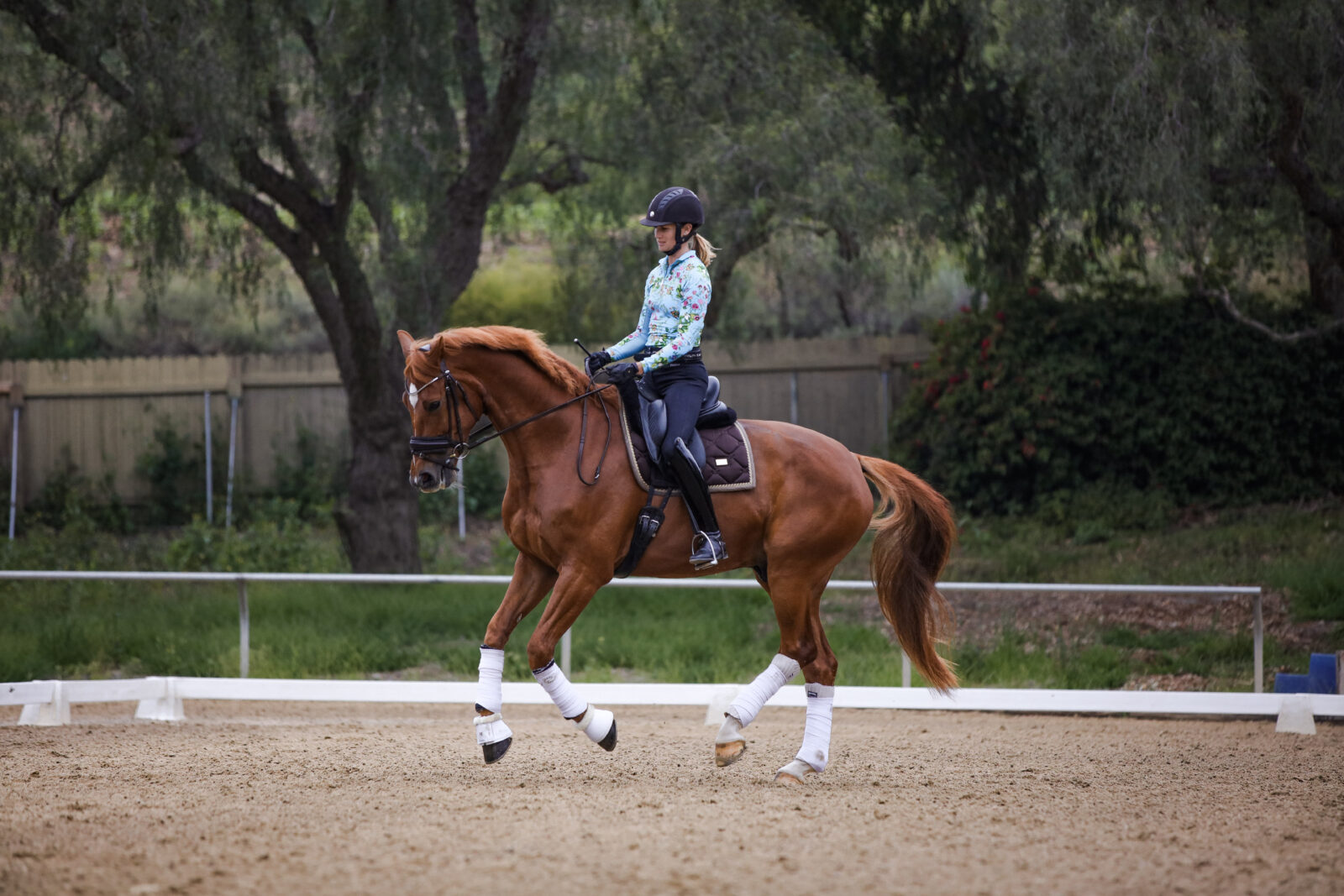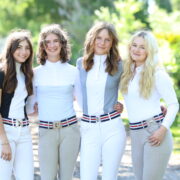Amelia Newcomb On Dressage For Jumpers

Ever had a riding theory question you couldn’t find the answer to? Or don’t have a go-to coach to ask? In this new segment, Amelia Newcomb is here to answer anything about your riding and dressage needs.
Everything I’ve read and every coach I’ve ridden with tells me that schooling dressage will help my jumping, but I don’t get how. I don’t know what to practice in dressage to improve the different elements in my jumping. Can you suggest some exercises to help me?
“Proper flatwork (aka dressage) will help you with your jumping. Before I give you some exercises, let me answer the root of your question the ‘How does dressage help you jump better?’ The very essence of dressage is to improve the movement and gaits to allow the horse to carry themselves better under a rider’s weight and thus create a more ridable horse. The better balanced the horse, and the more in tune they are with the rider, the better they jump (higher, faster, more complicated combinations, etc).
So as a jumper rider, you want to focus on exercises that improve the rideability, frame and self-carriage to help your jumping. Here are a few exercises:
To improve your adjustability of the gait
To ride an accurate distance or line, you need to be able to adjust the length of your trot or canter stride so that you can either add in a stride coming to a jump or lengthen the stride to make your distance. When you’re doing your flatwork, practice adjusting your stride length! Try this: do a slight leg yield from a meter or two off the wall to the wall, and then when you get to the wall, you ask for a few steps of lengthen (you can do this in trot and in canter). Then come back to the short stride and set up again for your next leg-yield to repeat. The leg yeild helps set up your horse’s hindquarters to put their legs more under themselves in a position to properly respond to the lengthen aids.
To improve straight and bending lines
To ride a perfectly straight line, you need to have your horse supple laterally in their body so they are able to respond to one leg or rein at any moment to keep them on the straight line. Riding circles and serpentines around the jumps gets your horse supple laterally in their body! Focus on the consistency of the line of travel and getting your horse to bend evenly in their body left and right. Every horse has a hollow side and a stiff side. To get them truly straight, they must be able to bend evenly left and right.
To improve the jump
A jump, in basic essence, is a large canter stride. So improving the quality of canter will allow your horse to have more scope and bascule when jumping. A good quality canter should be uphill, clear 3 beat, be active, have a nice moment of suspension with all 4 hooves in the air (also referred to as ‘jump’ in the canter), and of course, be adjustable (go back to that first exercise!). If you have a long, flat canter stride, it will be hard for you to get the correct distances and you’re more likely to have rails down. There are several good exercises to help create this better quality canter, but honestly, one of the most effective exercises is the walk-canter-walk on the circle to get more engagement and collection. Focus on the quality connection and keeping the roundness in the gait before, during, and after the transitions. If you need to add a 10m circle to get more balanced before the transition, do that to help your horse keep the quality of the gait!
I have a great video demonstrating how the quality of the canter affects the quality of your jump. Check it out here.”
–Amelia Newcomb
Amelia Newcomb is a USDF Gold medalist. Based in Somis, California, she incorporates complete dressage training from starting the young horse through the FEI levels in both her in person and online programs. Amelia works to develop a trusting and confident relationship between horse and rider. Her approach incorporates all aspects of horsemanship from basic groundwork to advanced dressage movements. Amelia’s mantra has always been “Dressage for All”, which is evident in both her in person and online coaching. With a successful YouTube video library of hundreds of free educational videos, over 70,000 subscribers (and counting!), and thousands of students enrolled in her online USDF accredited courses.
Interested in learning more from Amelia? Tune in to her segment on Thursdays in the Heels Down Spark. And sign up for her “30 Days To Round” Challenge – applications are open now!


